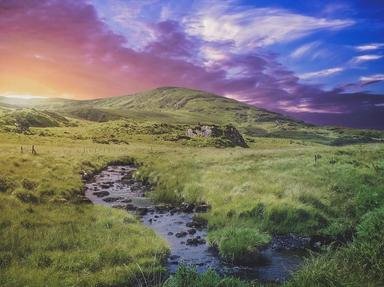Quiz Answer Key and Fun Facts
1. Which Belfast city centre hotel is known as the most bombed hotel in Europe, but was stayed in by President Bill Clinton during visits to the North of Ireland in 1995 and 1998?
2. The small village of Cong on the border of Counties Mayo and Galway achieved a moment of renown in 1952 when it was the location for which John Ford-directed film about a fictional Pittsburgh boxer?
3. Situated on the banks of the River Erne in County Fermanagh, what is the name of this village that has been the home of Ireland's most prestigious porcelain pottery since 1857?
4. Which building in Dublin city centre was taken over in Easter Week 1916 as headquarters for the Irish Volunteers uprising against British rule?
5. By far the largest lake in the Irish and British Isles, what is the name of this expanse of water that borders five of the North of Ireland's six counties?
6. Reputed to be once the biggest shipyard cranes in the world, they can be seen right across the Belfast skyline. What's the name given to these two bright yellow giants?
7. What is the name popularly given to the circular tourist trail around the beautiful Iveragh peninsula in Ireland's south west, between Killarney and Killorglin?
8. A famous landmark of 'the Troubles' is a house gable wall on which the slogan 'You Are Now Entering Free Derry' has been painted since 1969. In which district of Derry city, famous for the 'battle' which bears its name, is this gable wall?
9. Which flat and sandy plain in County Kildare is the home of Irish horse racing, and was the scene for the filming of battle scenes in Mel Gibson's 'Braveheart' (1995)?
10. Off which landmark on the Irish coast was RMS Lusitania sunk in May 1915?
Source: Author
dsimpy
This quiz was reviewed by FunTrivia editor
Exit10 before going online.
Any errors found in FunTrivia content are routinely corrected through our feedback system.

